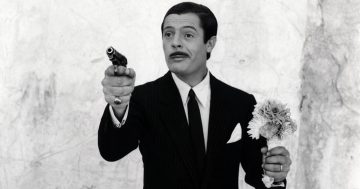The Actors Studio
Film Art
We could make this publication thanks to small donations. How is 3 minutos de arte supported?
The Actors Studio
The Actors Studio is the most emblematic drama school in the history of cinema. It is the one that changed the way of acting and is where the great actors came from at the time. (Today, we can say that its prestige remains intact.) We are talking about actors such as Marlon Brando, James Dean, and Paul Newman.
The Actors Studio was founded in 1947 by Elia Kazan, Cheryl Crawford, and Robert Lewis. And so decisive was its arrival and its influence on the world of cinema that, to give us an idea, we need only recall that, as early as 1951, Elia Kazan directed Marlon Brando in A Streetcar Named Desire. The same happened in 1954 with On the Waterfront, which won the Oscar for Best Picture.
How did the Actors Studio change acting?
Until that moment, what we could consider “old school” proposed more “theatrical,” less natural acting. Actors “declaimed” their texts (to declaim is to recite a text, giving it a special intonation, charged with emotion; let’s say “exaggerating” a little). Since the Actors Studio, the actors have deepened their exploration of their characters’ personalities. The interpretations have become less “acted” and more realistic. Naturalness has prevailed.
When Elia Kazan, Cheryl Crawford, and Robert Lewis founded the studio in 1947, the idea was born from the theories and works of the Russian actor, director, and theater teacher Konstantin Stanislavski (who had already died in 1938). A couple of years later, in 1951, when Lee Strasberg took over the direction, it was he himself who systematically developed the method for preparing the actors. This system became so emblematic that the actors of the Actors Studio were called “Method actors.”
The method developed by Strasberg incorporates the most important techniques created by Stanislavski, and, at the same time, dictates a series of rules for the actors to focus on what is called “retrospective inquiry” and “psychological motivation.”
Actors must experience emotions similar to those of the characters they are playing, immerse themselves in their psyches and motivations. To do this, the following are incorporated into their training: methods of relaxation, improvisation, and, as we said, the three fundamental techniques of Stanislavski: those of “affective memory,” “sensory memory,” and “identification.”
Image: Marlon Brando and Vivien Leigh in A Streetcar Named Desire (Elia Kazan, 1951)
Representative actors that went through the Actors Studio: Marlon Brando, Paul Newman, Montgomery Clift, James Dean, Steve McQueen, Shelley Winters, Harvey Keitel, Dustin Hoffman, Robert DeNiro, Julie Harris, Marilyn Monroe, Gene Hackman, Jon Voight, Al Pacino, Sissy Spaceck, Dennis Hopper.
Recommended links:
Film d’auteur (Auteur cinema).
The Golden Age of Hollywood (Classic Hollywood Cinema).
The Best American Movies in History according to the American Film Institute.
Georges Méliès and the Magic of the Cinema.
You can also find more material using the search engine.
Would you like to support 3 minutos de arte?
Our project.




0 Comments